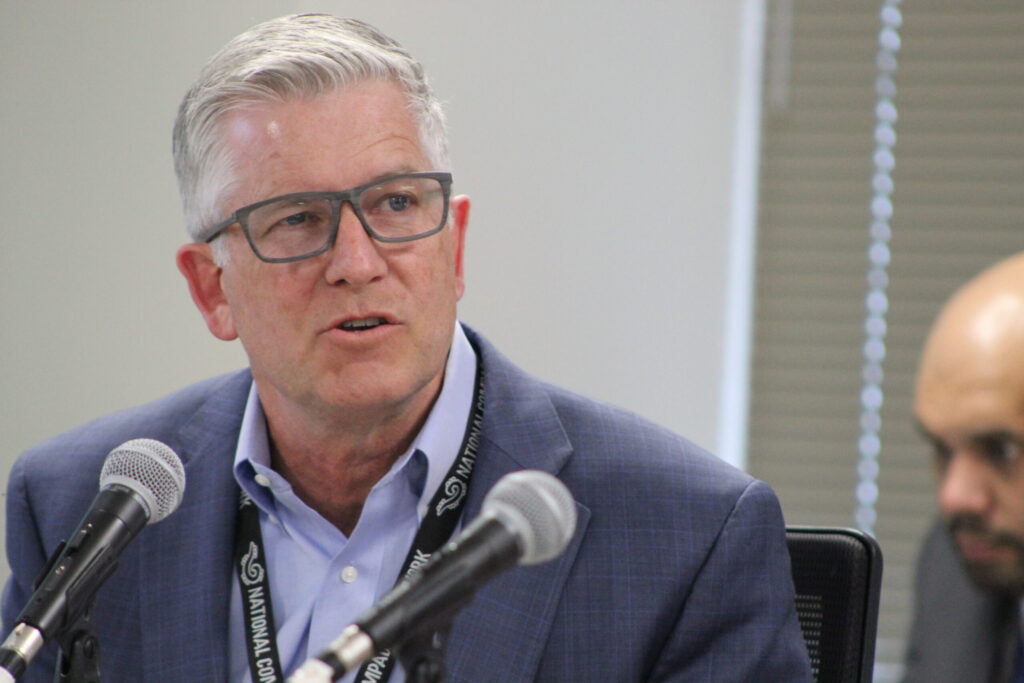Colorado’s population boom eases off | CRONIN & LOEVY


Colorado in recent decades has been a population boom state. But a new study by the Colorado State Demography Office indicates this may be changing – even as parts of El Paso County and greater Denver continue to grow rapidly.
From 2010 to 2020 Colorado was adding nearly 75,000 new residents a year. From July 2021 to July 2022, the annual population increase in Colorado was only 27,700 persons at a rate of 0.5%. It was population growth, but not at all like in the previous decade.
Still, Colorado compared well to the rest of the nation from July 2021 to July 2022. That growth of 27,700 persons ranked 21st in the United States, just above the middle of the pack of 50 states.
Stay up to speed: Sign up for daily opinion in your inbox Monday-Friday
Colorado’s population growth rate thus compared favorably to the rest of the country. From July 2021 to July 2022, 18 states experienced a decline in population.
The social and economic disruptions caused by the COVID-19 pandemic were doubtlessly responsible with having a downward impact on population growth both in Colorado and the nation.
The major component in population growth in Colorado was the excess of births over deaths. There were 62,500 births and 49,700 deaths from 2021 to 2022, producing a natural increase of 12,800.
Annual deaths, however, reached the highest levels ever recorded in Colorado. This sizable increase in deaths was attributed to COVID and the natural aging of the population.
Another component of the increase in Colorado population from 1921 to 2022 was net migration, the number of people moving into the state minus the number of people leaving the state. Net migration was plus-15,000 persons, thus showing more people moved into Colorado than moved out.
Recent population growth in Colorado has not been equally distributed throughout the state. As would be expected, the counties experiencing the most population growth are those along the Front Range of Colorado, from Fort Collins and Greeley on the north through Denver and Colorado Springs.
There was a rise in the number of Colorado counties that experienced a natural decline in population. By and large the regions of the state declining in population were on the eastern plains, in southern Colorado and in the non-resort counties on the Western Slope.
All told, 40 of Colorado’s 64 counties were in population decline. Two counties with relatively large populations, Pueblo and Mesa (county seat: Grand Junction) counties, were included in the population decline group.
Coloradans must adjust to the reality that the long predicted “birth dearth” has hit their state. The 62,500 births in the state from 2021 to 2022 compares unfavorably to 2007, the peak year for births in Colorado when the state hit a high of 70,700.
The dropping number of births in Colorado will have long term impacts on childcare centers, K-12 public schools and public higher education. The size of the labor force in Colorado might eventually be affected. At the present time, Weld County (Greeley) is the only county where the number of births is going up.
But the situation with births in Colorado could improve in the future. Births could begin to slightly increase in 2024 and beyond as the number of women in childbearing years starts to rise in the state. In addition, women millennials are entering their 30s, where birth rates have increased in the past.
Most of the population growth is occurring on the Front Range, but even within the Front Range there are differences. For instance, Jefferson (Golden) and Arapahoe (Littleton) counties declined slightly in population. Meanwhile, Douglas (Castle Rock), Weld (Greeley), Adams (Brighton), and El Paso (Colorado Springs) counties experienced major population gains.
The Front Range may have sported the highest populations, but many of the ski resort counties in the Rocky Mountains experienced faster population growth.
By 2022, the county with the highest total population in Colorado was El Paso County with 740,552 persons. In second place was Denver County with 712,637.
In terms of population growth from 2021 to 2022, Weld County was first with 10,341 additional residents. The runner up was Douglas County with 6,268.
The county with the highest percentage growth rate was San Juan (Silverton) County at 8.1%. The county with the second-highest percentage growth rate from 2021 to 2022 was Custer (Westcliffe) county with 5.4%. Both those counties are small.
Here are our takeaways from this recent report on population growth in Colorado: The steady and reliable growth of state population by 70,000 people per year that characterized 2010 to 2020 could be ending. The possible decline in births in the state will be a factor. Also contributing to lower population gains could be the rise in housing prices in Colorado, which discourages new people from moving into the state.
Here’s another point: The argument for building more affordable housing in Colorado is based on what happened in the state from 2010 to 2020 when population growth rates were high. If those high-population growth rates are not going to continue, Colorado could be embarking on building more affordable housing than it is going to need.
Colorado has benefited for many years from having high population growth. It stimulates the economy, particularly the home-building economy, and creates a general aura of optimism. If, as this study suggests, continuous high population growth in Colorado could be easing off, Colorado will be a somewhat different place for all its residents.
The Douglas-El Paso County region will still grow, more than many of its residents would like, but Colorado may not see the population booms that, until recently, made it one of the fastest-growing states in the U.S.
Tom Cronin and Bob Loevy write about Colorado and national politics.













